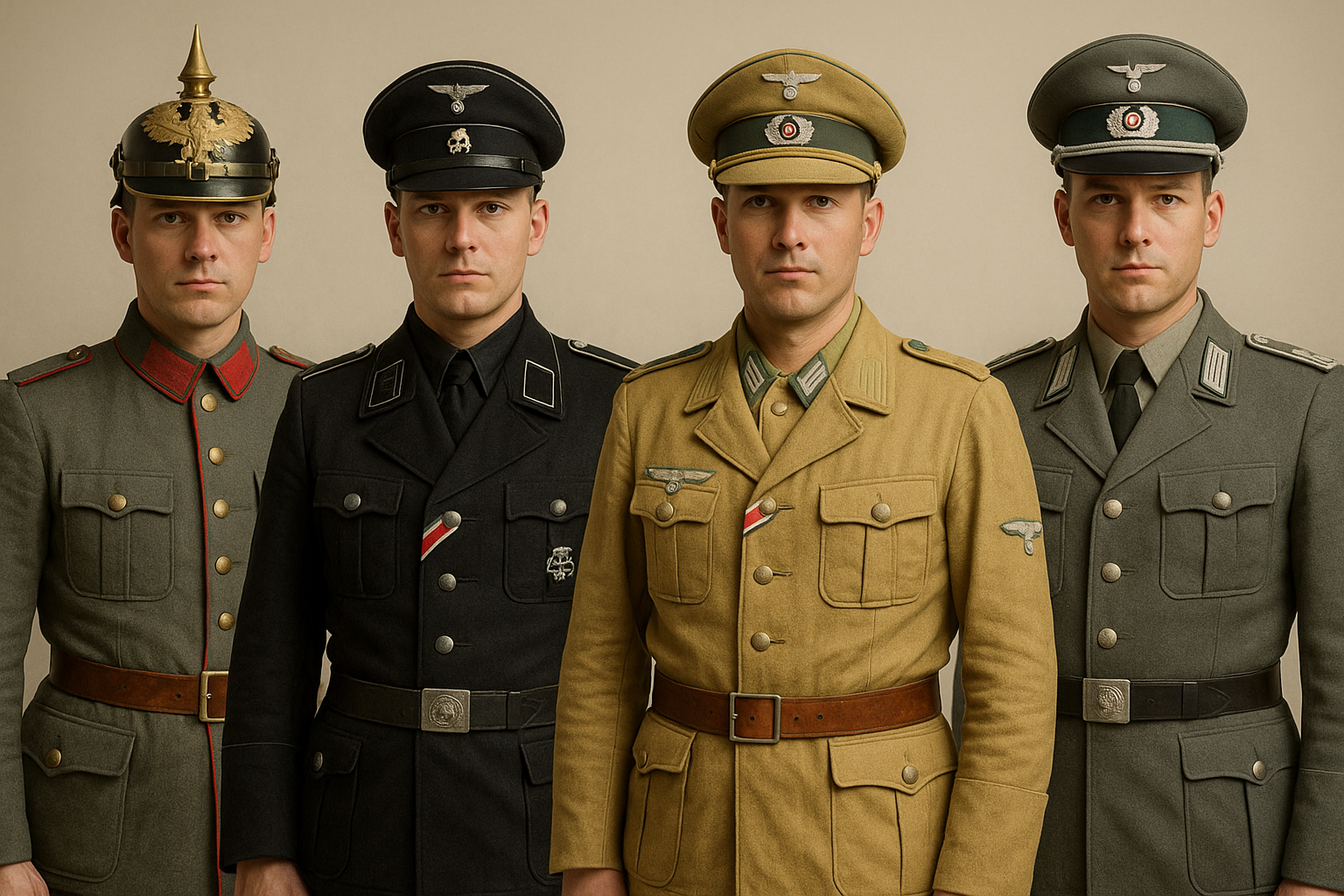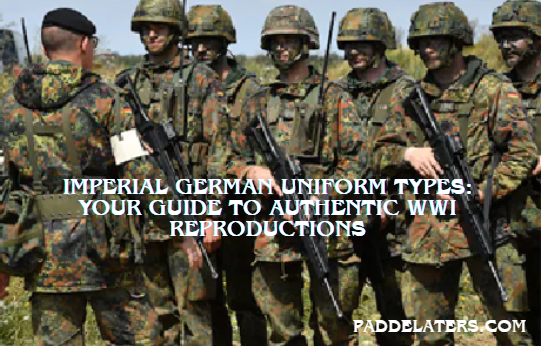
Imperial German Uniform Types: Your Guide to Authentic WWI Reproductions
Published on Aug 03, 2025
Exploring Imperial German Uniform Types: A Collector’s Guide to Authentic WWI Military Wear
Introduction: Why Imperial German Uniforms Are Coveted by History Enthusiasts
Among historical military apparel, imperial German uniform types from the First World War hold a unique place. Their intricate design, rich symbolism, and battlefield legacy make them a favorite among collectors and reenactors alike. At Paddelaters.com, we’ve dedicated over 8 years to reproducing these historical pieces with unmatched craftsmanship, providing enthusiasts with uniforms that echo authenticity and quality.
Whether you're delving into the past for historical research, preparing for a reenactment, or curating a vintage military wardrobe, understanding the different types of German WWI uniforms is key to making an informed choice.
Historical Significance of German WWI Uniforms
The uniforms of the Imperial German Army during WWI were more than functional garments—they were symbols of nationalism, rank, and regimental pride. From the famous Prussian army uniforms of 1870 to the more modernized German Afrika Korps uniforms seen in WWII, these outfits evolved significantly while maintaining elements of tradition.
Imperial uniforms, especially those from elite units like the SS Panzer divisions or early cavalry troops, often featured distinctive details such as piping colors, regimental numbers, and ornate buttons. These subtleties are crucial for collectors seeking accuracy and authenticity.
Key Features to Look for When Purchasing a WWI German Army Uniform
When investing in a WWI German uniform—whether for display or reenactment—attention to detail is critical. Here’s what to look for:
1. Authenticity
- Accurate patterns based on historical references
- Correct insignia placement and materials
- Period-appropriate tailoring methods
2. Materials
- Wool blends for tunics and trousers
- Natural fiber linings
- Original-style buttons and accessories
3. Craftsmanship
- Hand-stitched details
- Reinforced seams for durability
- Faithful reproductions of rank badges and collar tabs
4. Vendor Reputation
Choose vendors with experience and customer trust. Paddelaters.com’s WWI German uniform collection stands out for its precision, backed by positive reviews and a passion for history.
Use Cases: From Reenactments to Personal Collections
Imperial German uniforms serve various purposes beyond aesthetics:
- Historical Reenactments: Accurate reproductions help recreate key WWI battles with realism.
- Museum Exhibits: Enhance public displays with period-authentic garments.
- Collectors’ Displays: Showcase a curated timeline of military evolution.
- Film and Theater: Provide authenticity in media productions set during WWI or WWII.
Dive deeper into the process behind historical reproductions with our article: Reproducing History: German WWI Uniform Parts for Collectors and Reenactors
Table: Comparison of German WWI Uniform Types
FeatureOfficer UniformEnlisted UniformMaterial | Fine wool, tailored fit | Coarser wool, standard issue
Insignia | Custom rank insignias, medals | Basic collar tabs, unit patches
Cost Range | $250–$500 | $120–$250
Use | Command presence, ceremonial duties | Combat, daily service
Availability | Limited, custom-ordered | Widely available in standard sizes
Table: What to Consider Before Buying a WWI German Uniform
ConsiderationImportanceAuthenticity | Use original patterns, regimental markings
Fit | Tailored or adjustable for movement
Material | Durable, historically accurate fabrics
Vendor Reputation | Choose trusted names like Paddelaters.com
Purpose | Decide on display, reenactment, or collection
Ready to explore WWI German uniform options? Browse our collection now.
Top Tips for Choosing the Perfect German WWI Uniform
- Research your regiment: Understand unit-specific details before selecting a uniform.
- Buy from experts: Vendors like Paddelaters.com specialize in historically faithful reproductions.
- Compare ranks: Officer uniforms differ significantly in materials and tailoring.
- Consider accessories: Hats, belts, and boots complete the authentic look.
- Tailor for reenactments: Ensure mobility and durability for active use.
Check out our guide on choosing a high-quality WW1 German uniform for a deeper dive.
FAQs
Q1: What are the main types of imperial German uniforms from WWI?
A: Common types include infantry tunics, cavalry uniforms, and officer dress. Variants existed by regiment and region, such as Bavarian or Prussian styles.
Q2: Are East Germany uniforms similar to WWI uniforms?
A: No, East Germany uniforms were post-WWII and reflect Soviet-influenced styles, while imperial uniforms were rooted in Prussian military traditions.
Q3: Can I buy a replica SS Panzer uniform from WWI?
A: The SS Panzer uniform is WWII-era. For WWI, focus on Imperial Army units, though both styles share militaristic aesthetics. For WWII, explore German army uniforms here.
Q4: How accurate are reproductions at Paddelaters.com?
A: Exceptionally accurate—each piece is based on period documentation and constructed using traditional materials and techniques.
Q5: What's the price range for high-quality WWI uniforms?
A: Expect $120–$500 depending on rank and customization. Officer uniforms tend to cost more due to materials and details.
Q6: How do I ensure my uniform fits correctly?
A: Always refer to sizing charts and consider slight tailoring for reenactments.
Q7: Are Prussian Army uniforms from 1870 still relevant for collectors?
A: Yes. The Prussian Army uniforms of 1870 laid the groundwork for later WWI designs and remain a staple in historical collections.
Call-to-Action
Whether you're a seasoned reenactor or just beginning your historical journey, finding the right imperial German uniform is essential. At Paddelaters.com, we honor history with precision and pride. Explore WWI German uniform options tailored for authenticity, function, and historical fidelity.
